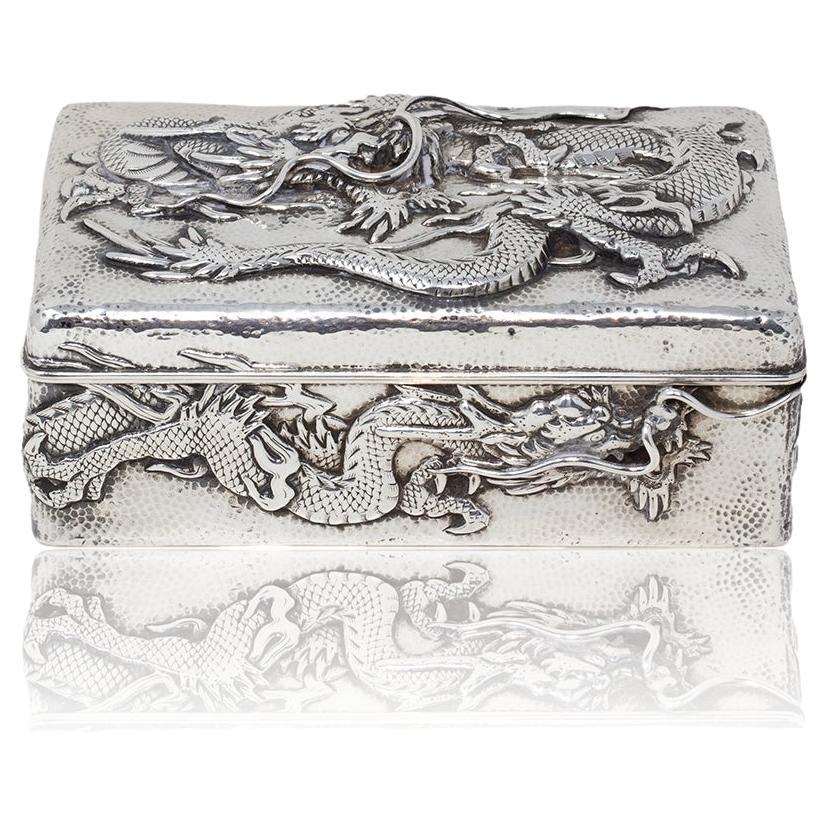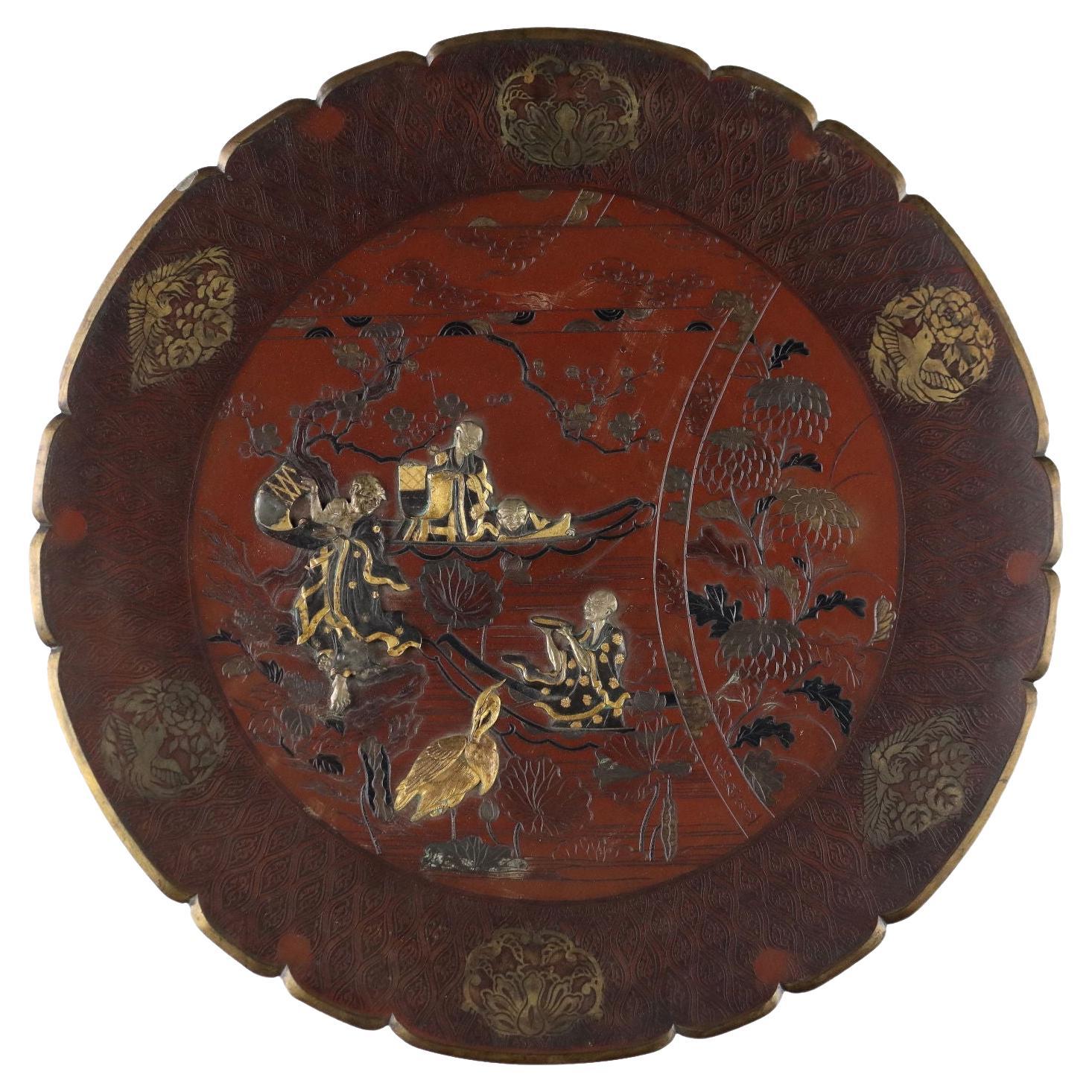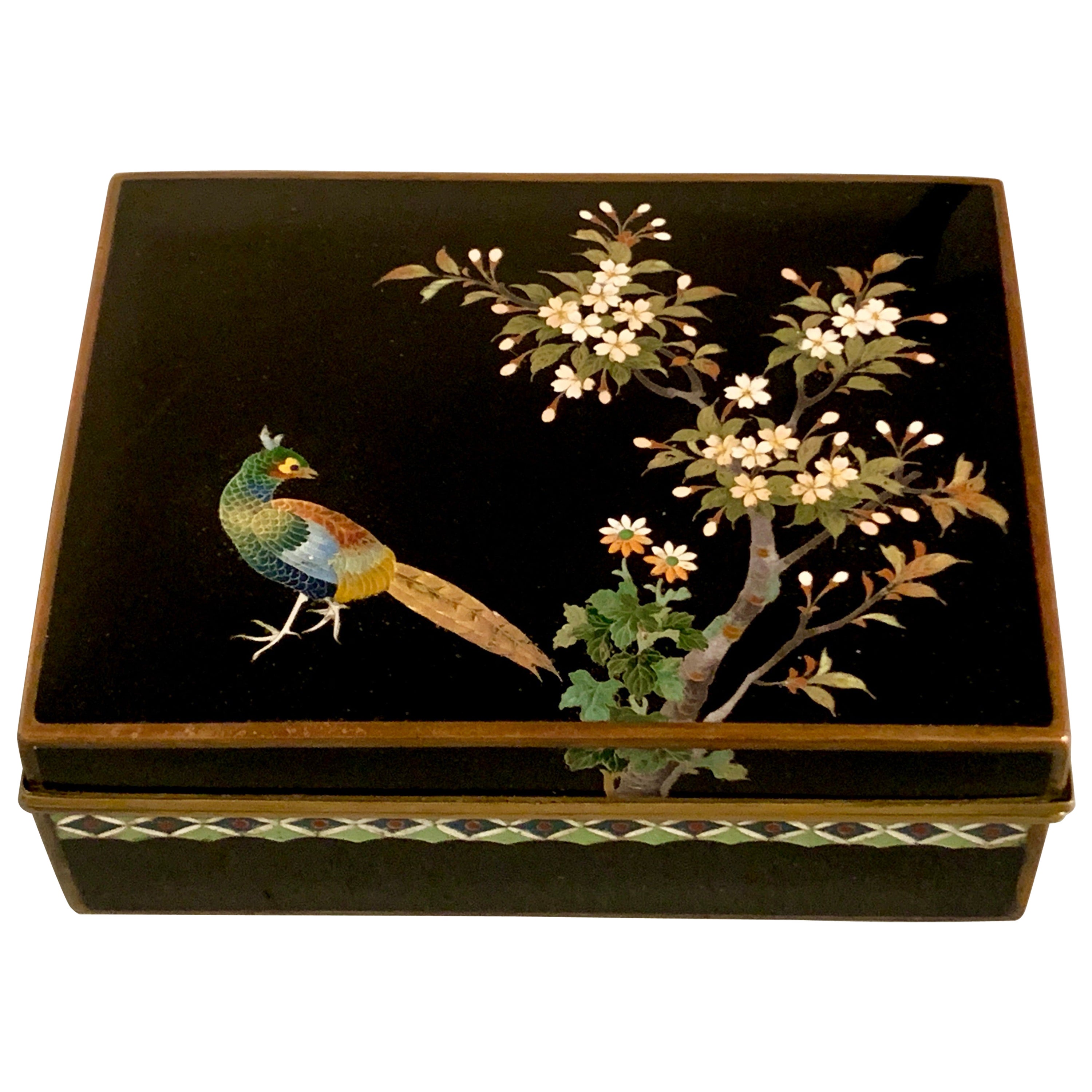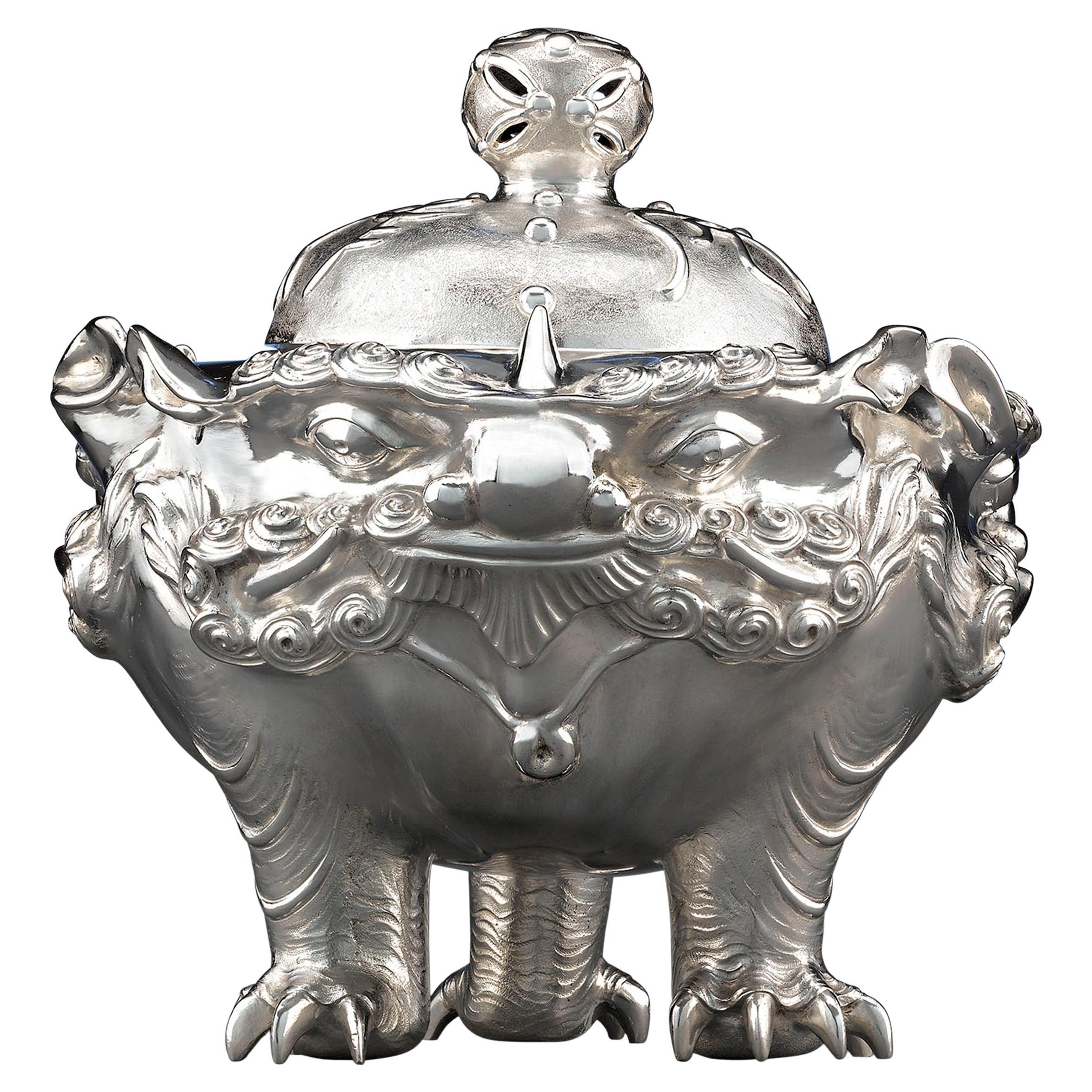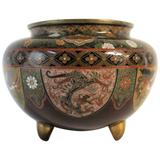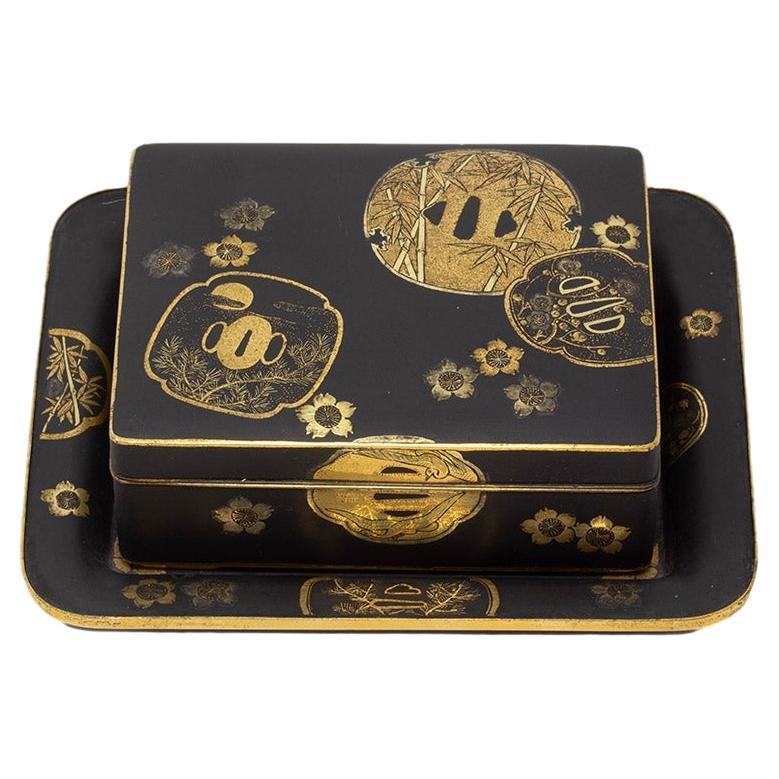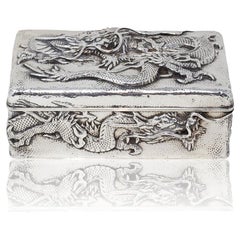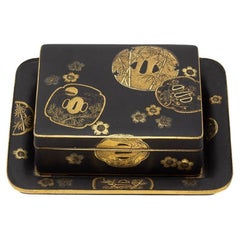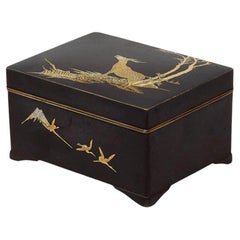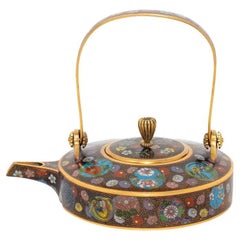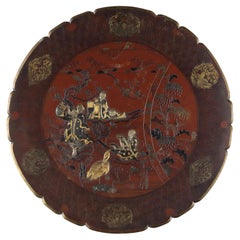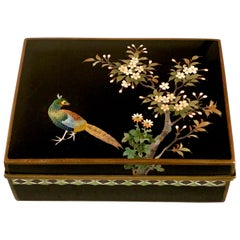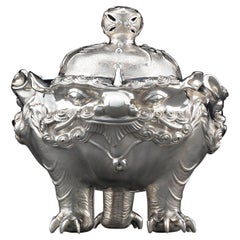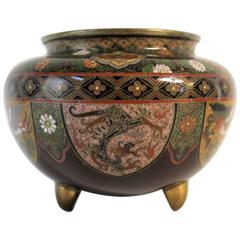Items Similar to Japanese Meiji Period (1868-1912) Three Wise Monkeys Box Komyo 光明
Want more images or videos?
Request additional images or videos from the seller
1 of 17
Japanese Meiji Period (1868-1912) Three Wise Monkeys Box Komyo 光明
About the Item
The Silver box of rectangular form with rounded corners features the Three Wise Monkeys to the front, see no evil, hear no evil and speak no evil. The monkeys cast beautifully with naturalistic features wearing humorous enamelled haori (羽織). The box is covered with katakiribori (engraving with an angled chisel emulating brushstrokes) of persimmon plants. Signed to one side Komyo 光明 who worked for Uyeda, the box dates to the later half of the Meiji Period (1868-1912) Circa 1910.
K. Uyeda shop (Uyeda Shoten, 植田商店) was founded in 1884 by Uyeda Kichigoro (植田吉五郎). It is one of the oldest established Japanese silversmiths that is still continues business today. Initially, satsuma ware vases and plates were the main products, but gradually the number of silver tableware and items of an everyday use that were popular among foreigners increased. In early 1930s the business was inherited by the Kichigoro’s sons, the elder Uyeda Fujiro (植田富士朗) and the younger Uyeda Yoshimi (植田義巳). Some of the high profile customers Uyeda obtained included American baseball players Babe Ruth and Joe DiMaggio, actress Marilyn Monroe, diplomat Henry Kissinger with his wife, professor and American diplomat Edwin Reischauer with his wife, and others.
While being mostly associated with the silver tableware and items of everyday usage during pre-WWII and just after the WWII period around late 1950s, the company began to focus more on the cultured pearl jewellery . In 1973 Kichigoro’s grandson, Uyeda Shintaro (植田新太郎), introduced the Italian jewelry, uncommon in Japan at the time, into the company’s product list. Around 1980s the company was entirely focused on selling pearls and jewelry, eventually changing the “K. Uyeda” name to “Uyeda Jeweller”.
The company is in operation till today, located at the Imperial Hotel Arcade, Tokyo. It is managed by the Kichigoro’s great-grandson, Tomohiro Uyeda (植田友宏), and produces and sells jewelry made of pearls, precious metals and stones.
Measurements (centimetres) 8.5cm Long x 6cm Wide x 3cm Deep
- Dimensions:Height: 3.35 in (8.51 cm)Width: 2.36 in (6 cm)Depth: 1.18 in (3 cm)
- Style:Meiji (Of the Period)
- Materials and Techniques:
- Place of Origin:
- Period:
- Date of Manufacture:Circa 1910
- Condition:
- Seller Location:Newark, GB
- Reference Number:Seller: BSADSD1stDibs: LU6971238340672
About the Seller
5.0
Gold Seller
Premium sellers maintaining a 4.3+ rating and 24-hour response times
Established in 2019
1stDibs seller since 2022
34 sales on 1stDibs
Typical response time: <1 hour
- ShippingRetrieving quote...Shipping from: Newark, United Kingdom
- Return Policy
Authenticity Guarantee
In the unlikely event there’s an issue with an item’s authenticity, contact us within 1 year for a full refund. DetailsMoney-Back Guarantee
If your item is not as described, is damaged in transit, or does not arrive, contact us within 7 days for a full refund. Details24-Hour Cancellation
You have a 24-hour grace period in which to reconsider your purchase, with no questions asked.Vetted Professional Sellers
Our world-class sellers must adhere to strict standards for service and quality, maintaining the integrity of our listings.Price-Match Guarantee
If you find that a seller listed the same item for a lower price elsewhere, we’ll match it.Trusted Global Delivery
Our best-in-class carrier network provides specialized shipping options worldwide, including custom delivery.More From This Seller
View AllJapanese Meiji Period (1868-1912) Silver Dragon Box
Located in Newark, England
Hammered Silver Decoration Stamped Jungin Pure Silver 純銀
From our Japanese collection, we are pleased to offer a Japanese Meiji Period Silver Dragon Box...
Category
Antique Late 19th Century Japanese Meiji Metalwork
Materials
Silver
Japanese Meiji Period Komai Style Box and Dish Fujii Yoshitoyo
Located in Newark, England
Original Box and Dish Pair
From our Japanese collection, we are pleased to offer this Japanese Komai Style Box and Dish Fujii Yoshitoyo. The Box of sl...
Category
Antique Late 19th Century Japanese Meiji Metalwork
Materials
Metal
Japanese Meiji Period Damascene Box by Ashizuki with Gold and Silver
Located in Newark, England
INLAID WITH A GOLD AND SILVER DEER
From our Japanese collection we are pleased to offer this Japanese Damascene Box by Ashizuki. The Japanese Box of re...
Category
Antique 19th Century Japanese Meiji Metalwork
Materials
Gold, Silver, Brass, Iron
Japanese Meiji Period Cloisonne Enamel Sake Pot
Located in Newark, England
Fine Japanese Meiji period cloisonne enamel Sake pot. The Sake pot of rounded form with with clean edges profusely decorated with blossoming flowers throughout upon a black ground ba...
Category
Antique Late 19th Century Japanese Meiji Metalwork
Materials
Metal, Enamel
Japanese Meiji Period (1868-1912) Satsuma Vase by Kinkozan
By Kinkozan
Located in Newark, England
JAPANESE SATSUMA PROCESSIONAL VASE
From our Japanese collection, we are delighted to introduce to the market this Japanese Satsuma Vase by Kinkozan. The vase with a compressed body ...
Category
Antique Late 19th Century Japanese Meiji Ceramics
Materials
Ceramic, Earthenware, Pottery
Japanese Meiji Period (1868-1912) Satsuma Kogo Incense Box by Taizan Yohei
By Taizan Yohei IX
Located in Newark, England
DEPICTING BISHAMON ONE OF THE SEVEN LUCKY GODS
From our Japanese Satsuma collection, we are delighted to offer this Japanese Satsuma Kogo by Taizan. The Satsuma Kogo of petit circul...
Category
Antique Early 1900s Japanese Meiji Ceramics
Materials
Ceramic, Earthenware, Pottery
You May Also Like
Bronze Plate Japan Meiji Era 1868-1912
By Non-Standard Furniture and Lighting
Located in Milano, IT
Bronze plate decorated with scene of lohans "enlightened disciples of Buddha" engaged in various prayer tasks in a river landscape of lotuses and birds. The figures of monks rendered...
Category
Antique 1890s Japanese Meiji Metalwork
Materials
Bronze
Japanese Cloisonne Box by Inaba, Meiji Period, circa 1900, Japan
By Inaba Cloisonne Co.
Located in Austin, TX
A fine Japanese cloisonne hinged box with pheasant and autumn foliage, by Inaba Nanaho and the Inaba Cloisonne Company, Meiji period, circa 1900, ...
Category
Antique Early 1900s Japanese Meiji Metalwork
Materials
Copper, Enamel, Metal
Meiji Period Japanese Silver Censer
Located in New Orleans, LA
This stunning Meiji period silver censer is a work of exquisite detail. Crafted by renowned silversmith Masatoshi of Tokyo, the censer, or incense burner...
Category
20th Century Japanese Meiji Metalwork
Materials
Silver
Japanese Meiji Period Cloisonne Bowl
Located in Hamilton, Ontario
Japanese Meiji period cloisonne bowl.
Category
Antique 19th Century Japanese Meiji Metalwork
Kanban, Japanese Shop Sign, Meiji Period, 1868-1912
Located in Camden, ME
This 19th century Japanese Pharmacy sign advertises a popular stomach medicine, Aifu from the Juwa Co. in Osaka. The hand-painted registered trademark of the world looking through bi...
Category
Antique 19th Century Japanese Meiji Lacquer
Materials
Lacquer
A Fine Japanese Cloisonné-enamel kogo box. Meiji period
Located in London, GB
A Fine Japanese Cloisonne Enamel Kogo Box.
Meiji period.
Worked in silver wire and decorated with cranes in flight on a dark blue background.
Interior in black enamel.
In go...
Category
Antique 19th Century Japanese Metalwork
Materials
Enamel
Recently Viewed
View AllMore Ways To Browse
Japanese Metal Plate
Japanese Meiji Period Box
Japanese Metal Box
Silver Japanese Jewelry Box
Antique Furniture Tokyo
Japanese Shop Sign
Three Monkeys
Japanese Enamel Box
Antique Japanese Silver Box
Silver Antique Japanese Boxes Silver Boxes
Japanese Monkey
Monkey Japan
Japanese Meiji Period Silver Vase
Antique Silver Plated Jewellery Box
Silver Repousse Box
Tokyo Japan Vase
Monkey Plate
Stone Monkey
